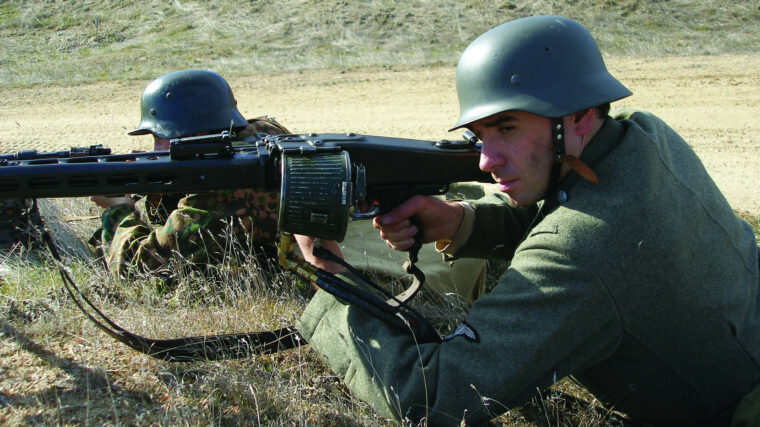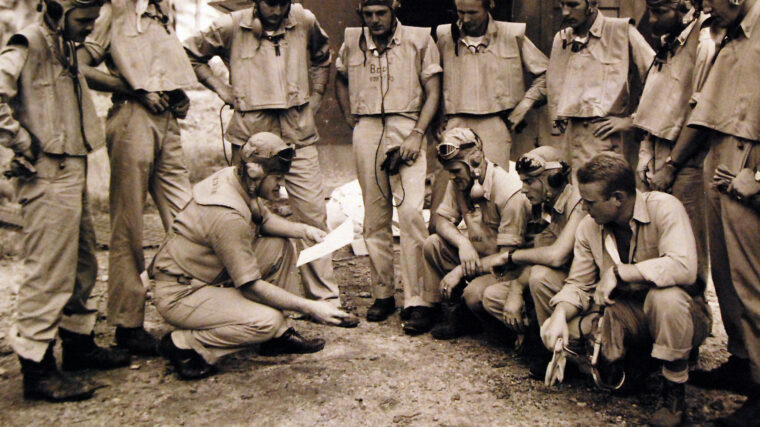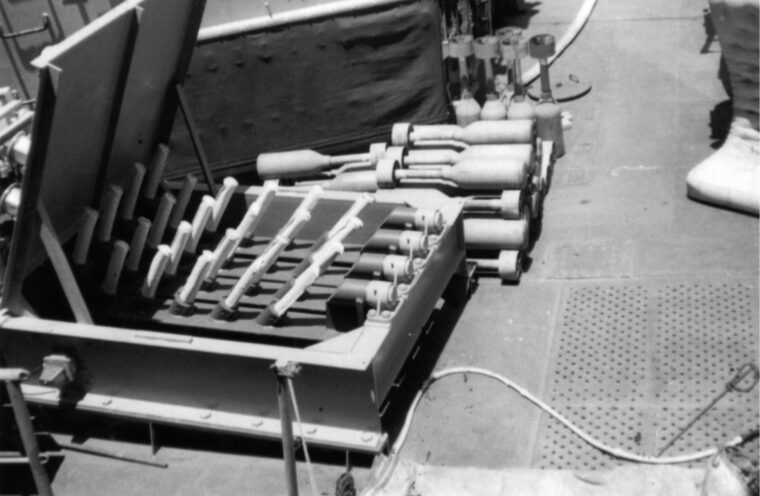
Military History
Military Replicas vs. Originals
By Peter SuciuFor collectors, finding out that an item believed to be authentic is actually a fake can feel like being punched in the stomach. Read more


Military History
For collectors, finding out that an item believed to be authentic is actually a fake can feel like being punched in the stomach. Read more

Military History
Besides his many proven crimes, Mexican guerrilla leader Pancho Villa was also accused in some circles of being responsible for one of the most celebrated disappearances in American history—the vanishing of controversial author-journalist Ambrose Bierce in December 1913. Read more

Military History
It is an irony of war that the model 1857 gun-howitzer that Union artillerists used to help turn the tide at Gettysburg was the brainchild of Confederate President Jefferson Davis, who championed the development of the new field piece while serving as secretary of war under Franklin Pierce. Read more

Military History
When most Americans think of Theodore Roosevelt, they conjure the image of the hard-charging Rough Rider at San Juan Hill, the western cowboy in six guns and chaps, the big game hunter in Africa, or the pulpit-pounding orator promising voters to “speak softly, but carry a big stick.” Read more

Military History
One of the great tenets of 19th-century historical painting was the idea of plein air art, which called for “truth, naïveté, simplicity, and the impression of the moment,” and insisted that “the soul of the picture is the event, and that the various hats, buttons, bows, spurs, and straps of the costume are not the most important elements.” Read more

Military History
When the Civil War broke out in 1861, the great American poet Walt Whitman was a man on the skids, personally and professionally. Read more

Military History
When the Duke of Monmouth began his doomed, quixotic march across southern England in the summer of 1685, one of the few volunteers to join him from royal-dominated London was a 24-year-old hosiery merchant and trader named Daniel Defoe. Read more

Military History
During World War II, the American aircraft carrier USS Intrepid (CVS-11) was known as “the Ghost Ship” to the Japanese Imperial Navy because every time they thought they had sunk her, “the Fighting I” came back for more. Read more

Military History
With the possible exception of King Philip himself, no individual in King Philip’s War achieved more unwanted notoriety than a 39-year-old mother of three and minister’s wife named Mary Rowlandson. Read more

Military History
William Bligh, like the title character in Woody Allen’s 1983 movie Zelig, seemed to turn up everywhere history was being made in the latter decades of the 18th century. Read more

Military History
If a picture truly paints a thousand words, then Gerry Embleton has painted volumes in his career. As a freelance illustrator of military subjects, he specializes in highly detailed, accurate studies of historical costumes, including period uniforms. Read more

Military History
Every war has unintended consequences— that’s why the wise leader never starts one. When King John returned to England in October 1214 from the European continent after yet another defeat at the hands of his lifelong enemies, the French, he faced perhaps the greatest unintended consequence in world history. Read more

Military History
One of the finest collections of militaria ever housed in one room was on hand in Louisville, Kentucky, at the 15th annual Show of Shows. Read more

Military History
For the past several years, three Hollywood studios waged war over the right to make a new movie about the Battle of Thermopylae (480 bc), in which a few hundred Spartans kept an enormous invading Persian army at bay for three days. Read more
Military History
Fellow poet William Butler Yeats once called Rupert Brooke “the handsomest man in England,” and few people who ever met Brooke—male or female—would have disagreed. Read more

Military History
American servicemen and women around the globe don’t have to wait months for a letter from home; they are able to share their daily lives with friends and family via e-mail. Read more

Military History
U.S. Marine Corps Lieutenant Colonel Gregory “Pappy” Boyington shot down 28 Japanese aircraft during World War II. He spent 20 months in an enemy prison camp and received both the Medal of Honor and the Navy Cross for his service to his country. Read more

Military History
Dear Editor:
I am now into my second subscription year and am really enjoying your magazine. I will be extending my subscription for another two years. Read more

Military History
Dear Editors:
I am writing to point out a small flaw in the June 2005 issue. I was highly impressed by Ludwig Heinrich Dyck’s “Charlemagne: Warlord of the Franks.” Read more

Military History
Dear Editors:
I took the enclosed photo of Hedgehogs in June 1961 on my ship USS Hector AR-7. Picture was taken on a DD alongside. Read more